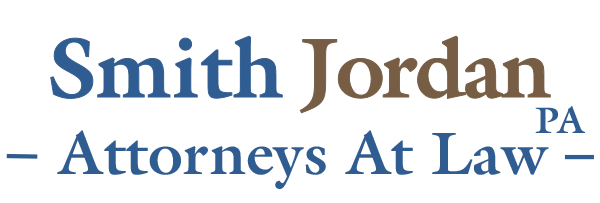In personal injury law, “liability” means that the person who hurt you is responsible for the financial, emotional, and other losses you experienced due to your negligence. Proving personal injury liability requires several steps that can be complex, depending on the situation.
At Smith Jordan Law, our Greenville personal injury lawyer has ample experience helping clients prove that someone else was responsible for their losses. This may lead to significant financial compensation to make up for those losses.
Liability in personal injury cases: how do you prove negligence?
Personal injury liability requires you and your attorney to present a preponderance of the evidence that shows negligence by the at-fault party. This proof may come from medical records, police reports, accident reports, photographs, and video footage showing what happened. Your lawyer must prove all four elements of negligence by demonstrating the defendant did the following:
- Owed you a duty of care: The person owed you a safe place or experience in some way, such as by welcoming you into their home or opening their shop for business.
- Breached that duty of care: They did or did not do something they should have done to avoid the risks. For example, they did not fix a broken stair railing, though they knew of the hazard and that someone could be hurt.
- Their breach of duty caused your injury: In this component, you must prove that their failure led directly to the injury, such as a fall because the railing was not repaired.
- The injury caused damages: This could include financial loss through medical bills and pain and suffering, supported by your bills and expert testimony.
All four elements must be shown to establish the defendant’s personal injury liability to you and to recover financial compensation for your injuries.
What does it mean when a person is liable for the injuries of another?
Personal injury liability means that a person must provide compensation for the losses the victim suffered due to the at-fault party’s negligence. Keep in mind that liability covers both economic and non-economic losses. Examples include:
- Medical bills
- Lost income while recovering
- Lost benefits
- Property damage
- Rehabilitation and therapy expenses
- Pain and suffering
- Emotional distress
- Mental anguish
- Disability
Your personal injury lawyer will guide you through collecting the necessary documentation for your economic losses. They can also help you with the special calculations needed to determine an appropriate amount for your non-economic damages.
Who pays for personal injury claims?
When you claim personal injury, the at-fault party is responsible for covering those costs. You can file a claim to seek payment if that person has applicable insurance. In a car accident, that falls under the auto insurance liability coverage. If it is a fall at a person’s home, homeowners’ coverage applies.
This typically means that you must file a claim with the applicable insurance provider, negotiate a settlement amount by providing evidence of your damages and documenting your losses, and then wait for the insurance company to pay the compensation to you. When an agreement cannot be made, you may have to file a personal injury lawsuit against the individual for the compensation owed to you.
Our personal injury liability attorney can help you
Because these cases are complex, working closely with a personal injury attorney who can guide you is often best. Allow our team to answer your questions and determine who is at fault, how much you are owed, and how to recover your losses. We work aggressively at Smith Jordan Law to protect our clients. Request a free consultation online or call (864) 343-2222.

